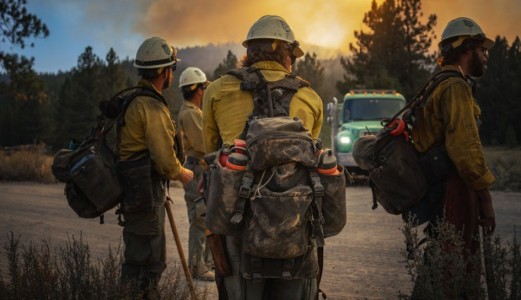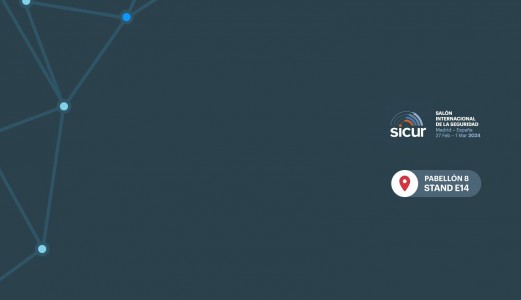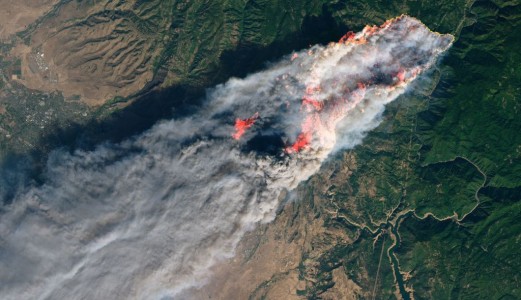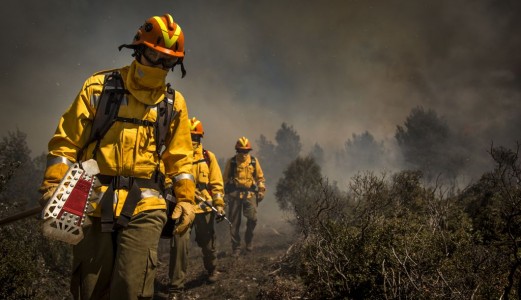The toolbox consists of a collection of elements that make up the wide range of options available to an operative. There is no such thing as a better or worse tool, but rather a tool that is better suited to a specific fuel type or task. However, some tools have a greater affinity with each other, which means that their combination is much more efficient than others.
Worldwide, the wildland firefighting toolbox includes, to a greater or lesser extent:
Hand and power tools (HPT):
They are light tools that are used to tackle burning fuel, such as a fire swatter or shovel. They can also be used to create a hand line which reaches down to mineral soil, such as the Gorgui, the Pulaski, the McLeod or rakes. In addition, backpack pumps, which do not require any water installation, can also be included in this category. Hand tools are easy to transport and do not need fuel nor suppression medium to operate (except for fire backpack pumps). In addition, they are relatively economical and, if properly maintained, their service lifespan is considerably prolonged. On the other hand, they require significant physical effort from the user and their suppression capacity is limited by both their rate of suppression and, due to flame intensity. Chainsaws and power blowers, however, are known as power tools. These tools offer different performance and options than hand tools but require fuel and more thorough maintenance.
In most cases, these tools are used collectively, as each tool has a specific function, such as cutting, digging or dragging. In the case of the Gorgui, using the different parts of the head makes it an ideal multifunctional tool for a vast array of scenarios.
Hose line (HL):
Water is the suppression medium of excellence. Its physical properties allow it to absorb a lot of the fire's energy, and with a high-pressure hose nozzle, it can even remove incandescent material and penetrate the ground. In addition, the water does not expire, it does not pollute, foam, wetting agents and retardants can also be added to it. It is also easy to transport, as it does not require pressurised tanks like, for example, CO2. However, laying a hose line can be a tedious task that requires a great deal of effort from the crew, which slows down the rate at which the operation progresses.
The main drawback is its water limit and availability at the desired place and time. To pump water from tanks, fire pumps are needed that provide a certain flow capacity and delivery pressure. For example, the Black Panther 4 portable fire pump which is ideal thanks to its weight and performance. In addition, to address this challenge, there are solutions such as the Heliskid, a suppression system that can be transported by land or air, allowing direct hose line attacks to be carried out in remote areas thanks to its built-in motor pumps.
Aerial resources (AR):
The use of aerial resources in wildland firefighting dates back to the 1930s and today they still play a very important role. Helicopters and aeroplanes are used to drop water or retardant, as well as to transport crew members and equipment. It is common to come across helitack crews, in which the helicopter flies ahead reducing the flame length, while wildland firefighters with hand tools stabilise the perimeter. In addition, aerial resources can perform logistical tasks, such as transporting a Heliskid as mentioned previously. In turn, they can perform control and coordination tasks for the unit deployed on the ground.
Tactical burns (TB):
Drip torches allow fire to be used as a suppression tool, performing operations such as backfires, burnouts or perimeter definitions. It is one of the few effective tools against large flame fronts, although its use requires extensive knowledge and the availability of fuel mixture. Additionally, its small size is ideal for helitacked crews and light vehicles that do most of their work with hand tools. In this sense, the new Vallfirest 1L drip torch is the ideal complement to the Xtreme Pack forestry backpack and increases the firefighter's suppression capacity.
Heavy Machinery (HM):
Bulldozers are one of the most powerful and overlooked tools in wildfire suppression. They are used to create wide control lines, increase the size of anchor points to aid tactical burn operations, attack the wildfire directly, create perimeter access, and establish safe zones. They can also be used for both fire suppression and fire prevention. However, one of the major drawbacks is the logistics involved in deploying bulldozers to wildfires. Gondola trucks are required to transport the heavy machinery close to the perimeter, but they are not an agile resource when moving between the different parts of a wildfire. To address this limitation, the Dronster has been developed as a high-performance professional machine designed to provide safety and efficiency for crews. An agile and effective asset wherever its presence is required. It is also easy to transport in a pickup truck, helicopter or as part of the Tactical Unit 1 module.
As we progress into the future, we can anticipate the development of new tools and technologies to fight wildfires. Virtual reality and artificial intelligence could play a crucial role in fire prevention and suppression. With virtual reality, wildland firefighters could be trained in simulated environments, allowing them to face different scenarios and improve their skills in a safe way. Artificial intelligence could play a role in early fire detection, using advanced algorithms to analyse data and patterns and quickly alert firefighting services. These innovations could revolutionise the way we tackle wildfires and further increase the safety and effectiveness of our firefighting tactics.
Amidst all the technological advances, we must remember that the safety and security of the wildland firefighter remains paramount. The development of new equipment and safety protocols must be a constant priority. From more advanced fireproof suits to more efficient communication systems and real-time health monitoring equipment, it is critical to invest in the protection and well-being of those on the fire line. In addition, ongoing education and training is essential to ensure that wildland firefighters are prepared to face the ever-changing challenges presented by wildfires.
This content has been possible thanks to the Vallfirest x The Emergency Program agreement.






